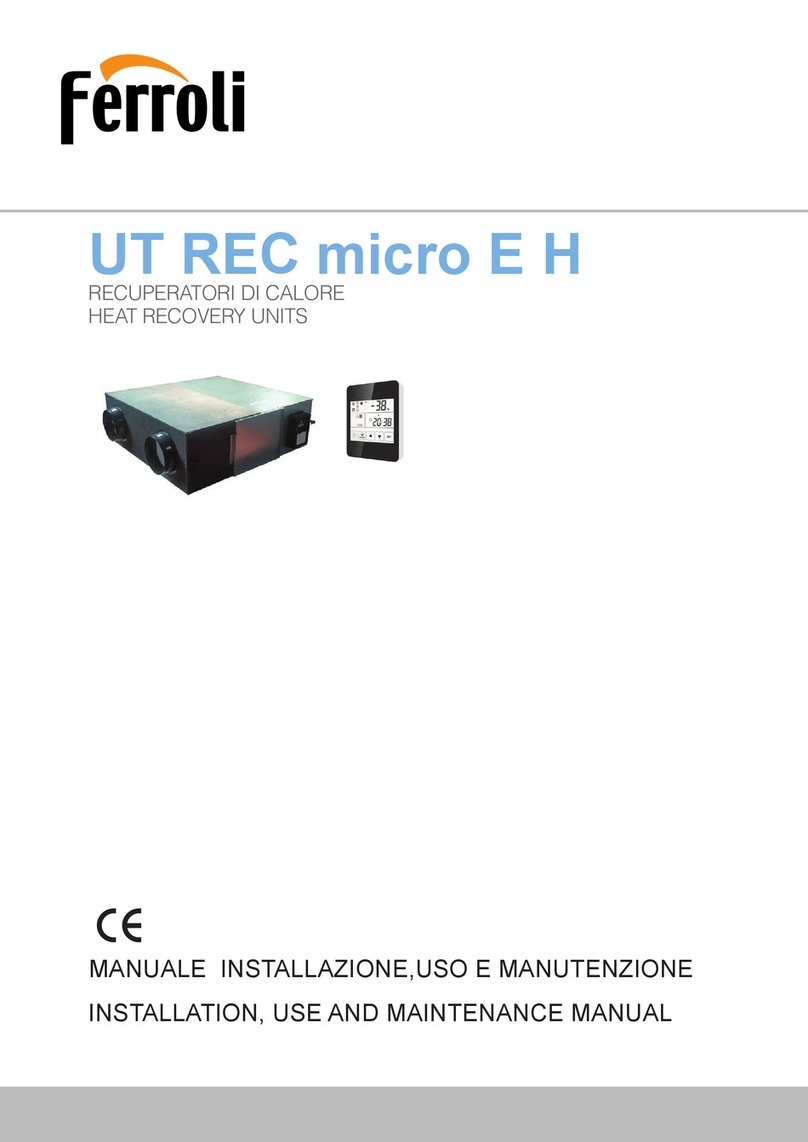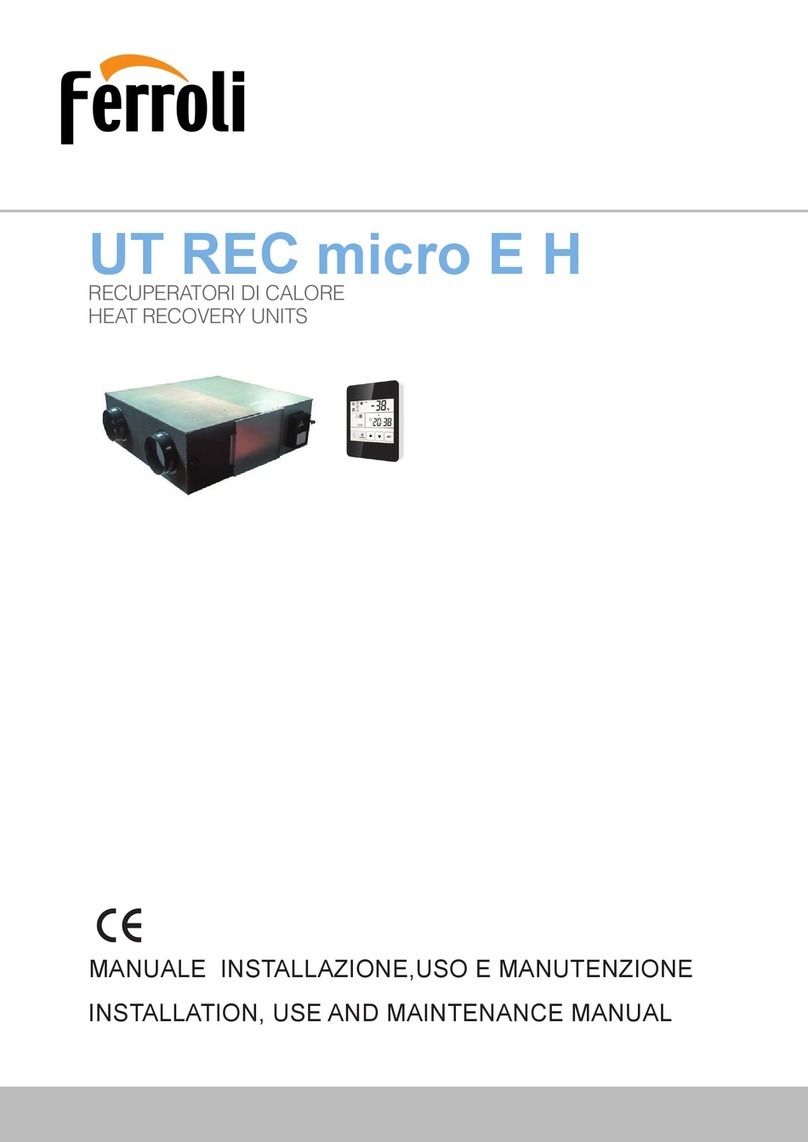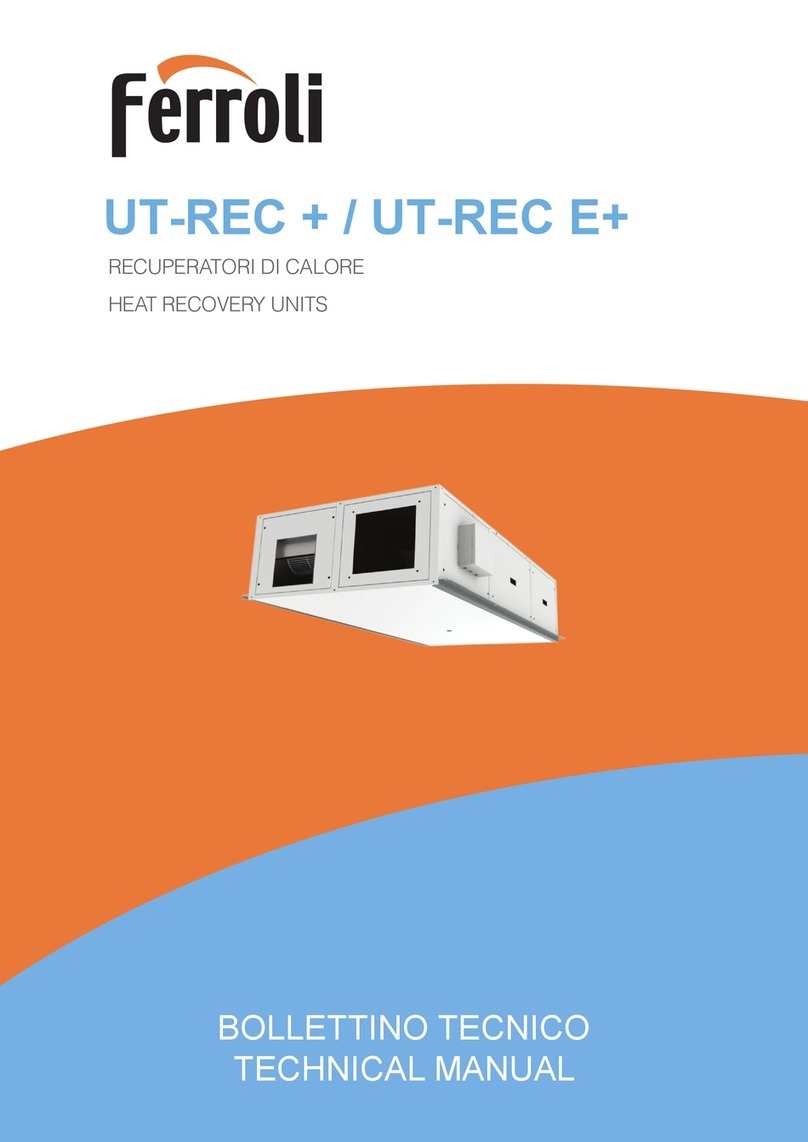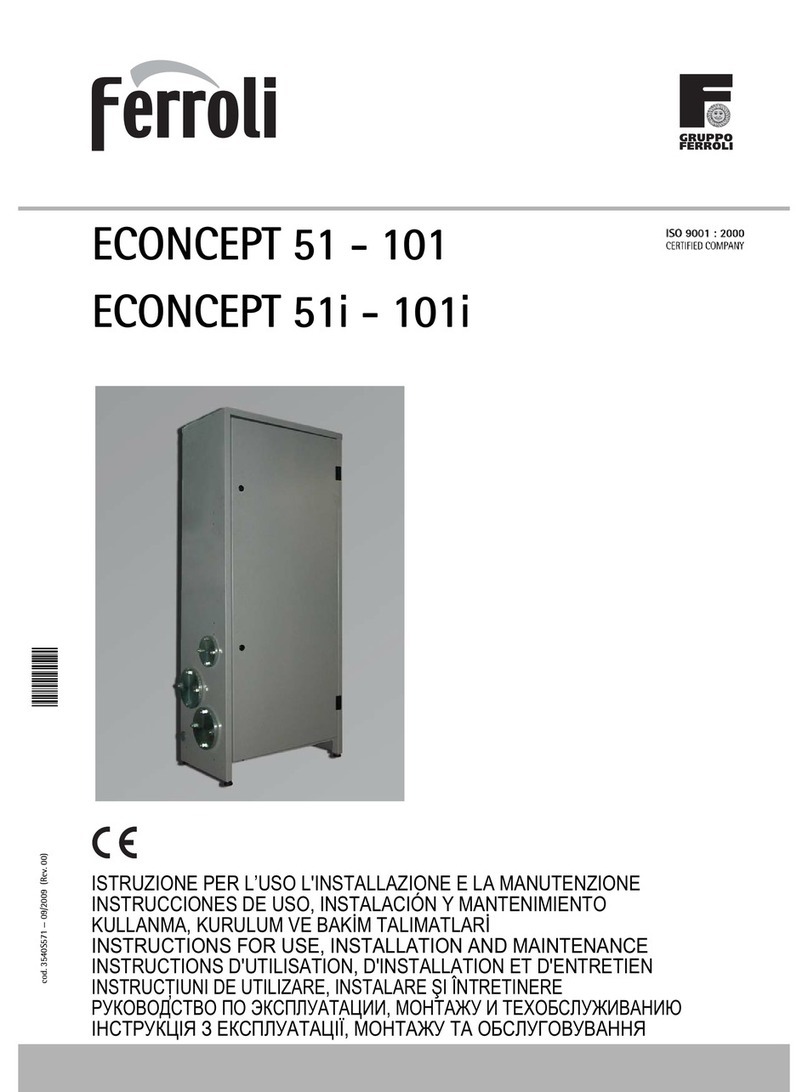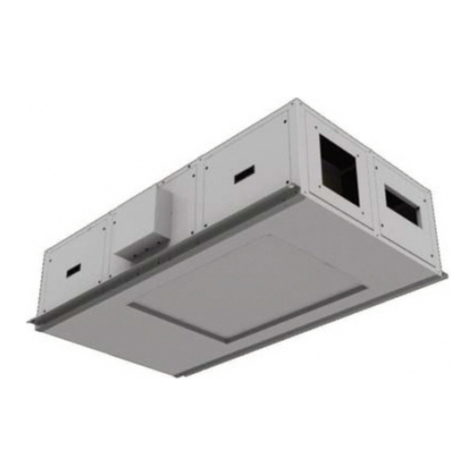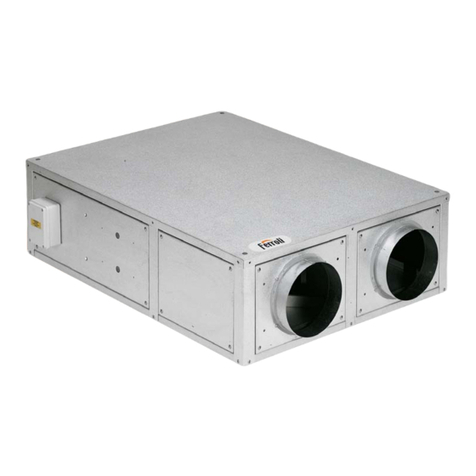
Manuale di installazione, Uso e Manutenzione - Installation, Use and Maintenance Manual
pag. 4
Ricordiamo che l'utilizzo di prodotti che impiegano energia elettrica ed acqua, comporta
l'osservanza di alcune regole fondamentali di sicurezza quali:
We remind you that the use of products that employ electrical energy and
water requires that a number of essential safety rules be followed, including:
È vietato l'uso dell'apparecchio ai bambini e alle persone inabili non
assistite.
This appliance must not be used be children and unaided dis-
abled persons.
È vietato toccare l'apparecchio se si è a piedi nudi e con parti del corpo
bagnate o umide.
It is prohibited to touch the appliance when you are barefoot
and with parts of the body that are wet or damp.
È vietata qualsiasi operazione di manutenzione o di pulizia, prima di
aver scollegato l'apparecchio dalla rete di alimentazione elettrica posi-
zionando l'interruttore generale dell'impianto su "spento".
It is prohibited to perform any maintenance or cleaning opera-
tion before having disconnected the appliance from the
mains electricity network, by positioning the plant master switch
at "off"
È vietato modificare i dispositivi di sicurezza o di regolazione senza
l'autorizzazione e le indicazioni del costruttore dell'apparecchio.
It is prohibited to modify the safety or adjustment devices
without the manufacturer’s authorisation and precise instruc-
tions
È vietato tirare, staccare, torcere i cavi elettrici fuoriuscenti dall'apparec-
chio, anche se questo è scollegato dalla rete di alimentazione elettrica.
It is prohibited to pull, detach or twist the electrical cables
coming from the unit even if it is disconnected from the electri-
cal mains
È vietato salire con i piedi sull'apparecchio, sedersi e/o appoggiarvi
qualsiasi tipo di oggetto.
It is prohibited to climb onto the unit, sit on it and/or rest any
type of object on it.
È vietato spruzzare o gettare acqua direttamente sull'apparecchio.
It is prohibited to spray or jet water directly onto the unit.
È vietato aprire gli sportelli di accesso alle parti interne dell'apparec-
chio, senza aver prima posizionato l'interruttore generale dell'impianto
su "spento" .
It is prohibited to open the doors for accessing the internal parts
of the appliance without first having switched off the master
switch of the "system".
È vietato disperdere, abbandonare o lasciare alla portata di bambini il
materiale dell'imballo in quanto può essere potenziale fonte di pericolo.
It is prohibited to disperse, abandon or leave the packing mate-
rials within the reach of children, as they are a potential
source of danger
Poiché la Ditta Costruttrice è costantemente impegnata nel conti-
nuo perfezionamento di tutta la sua produzione, le caratteristiche
estetiche e dimensionali, i dati tecnici, gli equipaggiamenti e gli
accessori, possono essere soggetti a variazione.
Per tale motivo il produttore si riserva di apportare qualsiasi
modifica senza preavviso.
As our Company is constantly involved in the continuous impro-
vement of its production, aesthetic characteristics and dimen-
sions, technical data, equipment and accessories can be subject
to variation. For this reason the manufacturer reserves the right
to make any changes without prior notice.
NOTE IMPORTANTI
Le unità sono progettate e costruite esclusivamente per:
- installazioni interne, salvo adottare idonei accessori che ne con-
sentano l’installazione all’aperto;
- per il trattamento aria degli ambienti civili, incompatibili con gas
tossici, esplosivi, infiammabili e corrosivi (incluse atmosfere con
cloro e salsedine).
Quindi se ne fa esplicito divieto di utilizzo in quegli ambienti dove
l'aria risulti mescolata e/o alterata da altri composti gassosi e/o
particelle solide.
L'utilizzo per scopi diversi da quelli previsti, e non conformi a
quanto descritto in questo manuale, farà decadere automatica-
mente qualsiasi responsabilità diretta e/o indiretta della Ditta
Costruttrice e dei suoi Distributori.
IMPORTANT NOTES
The units are designed and built exclusively for:
- internal installation, except to use specific option for outdoor
installation;
- for air traitment in the civil environments, incompatible with
toxic, explosive, inflammable and corrosive (chlorinated and sali-
ne included) gases.
Therefore it cannot be used in those environments where the air
is mixed and/or altered by other gaseous composites and/or solid
particles.
The use of the same for different purposes from those envisioned,
not conform to that described in this manual, will make any direct
and/or indirect liability of the Manufacturer automatically become
null and void.
